The Internet changes so fast that even the stories from a few years back sounds like coming out of a history book; it quickly becomes a matter of “archaeology.” If you are millennial, you probably have been through the evolution of the early days of the Internet; much of it is similar for all of us, then there are the variations that comes from our individual exposures to technology over the last few decades. Add your stories in the comments!
The first computer I extensively used had a 256 megahertz Intel Pentium-1 processor with 32mb RAM and a 4gb hard disk back in 1997, it was my friend’s. I saved time everyday to visit their house to play with that machine. It made real noise while turning on, sssrrrhh whirrree, ghrrring ghrraang, crrrank, crrink—that noise sounded like euphoria. I developed a humane relationship with this machine as I could sense its happiness and pain as it kept making those noises.
I never had a computer of my own until 2007, I got one when I was busy working on my undergraduate thesis project. I bought a desktop computer with Pentium D processor, the first true dual core processor from Intel, back then it felt like blazing fast, beating anything else. I quickly had to move my several hundred thousand square feet masterplan project from pencil and pen to CAD, 3D and CG. Surprisingly or not, I bought that computer using the money I got as remuneration for making a website!
Yeah, I learned to code, CAD and CG several years before I owned a computer. The same reason, I couldn’t wait for the Internet to become more “device independent” and cloud based, way before the word “cloud” was probably coined. I was waiting for everything to go online, even the operating systems, softwares and entire file systems back in the late nineties, so that I never had to own a computer.
That probably also influenced my eagerness for adapting, comprehending and building new technologies, primarily for my own nomatic digital life. I wanted everything everywhere readily available as soon as I logged in to the Internet no matter which computer I am using. I expected something like Google Doc to exist back in 1998, thinking if two computers are connected over a network, why can’t we edit a Word document simultaneously, a simple thought—that took decades to become a reality. This line of thought is a byproduct advantage of not having a computer or any personal computing device. I always wanted to remain “device independent,” I still do. I can throw away any device I own, and resume working in full throttle within fifteen minutes.
Over the time, there are some tools and services I used that had some major impact on the way I perceive technology, and probably also the way technology has evolved overall for everyone. Here are some of the important ones from the archaeology as I see it:
Eudora
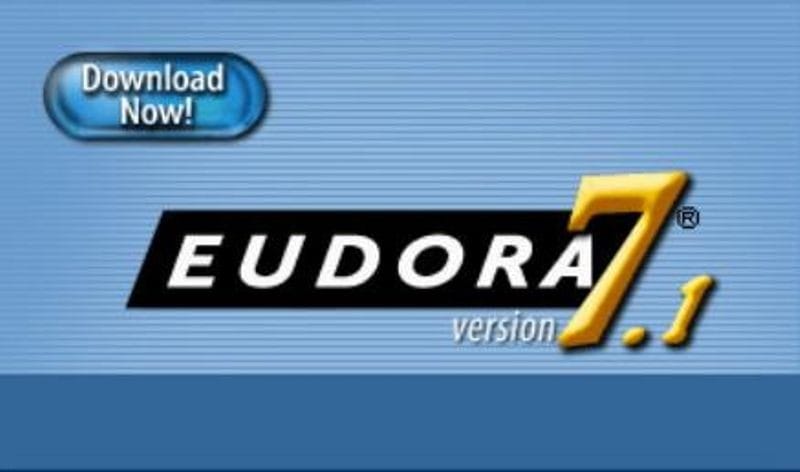
Before all the web-mails got popular Eudora was the go to desktop email client for Windows. My first experience of sending an email was to my brothers then living in Bangalore, from a local shop in Rajshahi that offered sending and receiving emails for ৳25 per email, ৳10 for printing a received email. I am talking 1997 or so. The shop used to call our home landline when a new email came. I used to sit down next to the computer guy who typed in the email for me, he wouldn’t let me type 🙄
Cyber Cafes
Much of my early days of coding, website building and maintenance were done from neighbourhood cyber cafes. When they first opened in Dhaka or Rajshahi it used to be 60 taka per hour for about 16kbps or less speed. Most of the places I vividly remember probably doesn’t exist anymore—Chartered Computers–Zero Point Rajshahi, Cafe Tu Tu Tango–Bashiruddin Road, Kalabagan, these two three cyber cafes in Nurjahan Road, Mohammadpur; significant times of my life have gone into the cubicles of these places.
Geocities
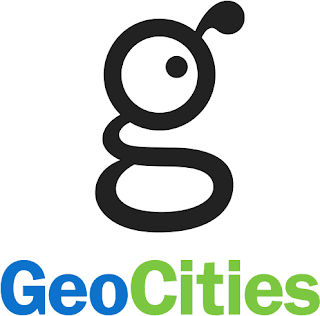
When I was still trying to figure out how the URL structure, domain name etc work, Geocities came with the offer of 5mb free hosting space, they soon increased it to 15mb. I quickly wrote some html pages, uploaded to test, bam it worked! My first website, I can’t remember the name, but it was geocities.com/tauheed or something like that. Then Yahoo acquired Geocities, increased the hosting space to 30mb. I started using/abusing it as a cloud based file hosting that replaced my necessity and obsession of carrying floppy disks in my shirt’s pockets; this was probably between the late nineties to 2001. It was so fascinating to tell someone a URL to download something instead of giving them a floppy that kept flopping, breaking miserably at the most crucial times.
IRC
The Internet Relay Chat rooms were the big hype of Internet during the late nineties, early two thousands. IRC connected the world over random anonymous conversations and theme based chat rooms. There was no need for using real names, nobody did, everyone had an Internet nickname for IRC use.
The whole world was suddenly finding each other over random IRC chat rooms. I still cherish its “un-intelligent” randomness, connections that are not manipulated by any algorithm or personal preference. I made real friends completely randomly over IRC, people I would have otherwise never met.
One of the neatly moderated Bangladeshi IRC channels was BanglaCafe. BanglaCafe started their own email service, independently hosted IRC servers in Bangladesh, probably the first and biggest of this sort.
LifeLessPeople (L2P) and other bulletin boards
Bulletin boards or online discussion forums were probably the earliest versions of social media as we know it now. Much of the early forums were built on PHPBB or VBulletin open-source script packages that had some standard looks and facilities. Bulletin boards were our Reddit or Facebook.
I was a regular at this bulletin board called LifeLessPeople. They started this brilliant “point by writing” system, where if you write something in the forum you get points based on how long you wrote, how important the topic was etc. Later, you can buy various things using those points, including dot com domains and website hosting space.
My first real website was hosted on this L2P server, back in the days (2001–2006ish), they were highly regarded as the best Linux–Apache–PHP servers on the Internet that “money can not buy,” they only gave the hosting to those who were active in their bulletin board. I reached the threshold of 600 points to get a free hosting account, that was the day probably ArchSociety.com actually took off with a Russian domain archsociety.com.ru that I got free from L2P along with the hosting space. I learned so many things from this forum, and made many friends!
Orkut
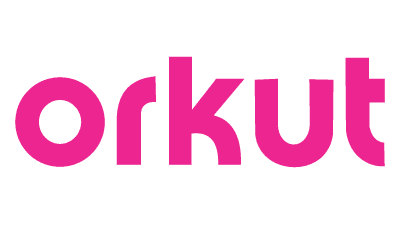
Orkut is one of the early glimpses of what social media can become. Orkut showed the way. Orkut groups played a big role in the propagation of all other projects that I was doing during the early 2000s. ArchSociety’s first major boost in the number of international users probably came from the architecture related niche groups inside Orkut in 2004-2007.
The Early WordPress and The BrainWitness
The first WordPress I installed on a server was WP 0.0.3 version, probably in 2003. I loved the attitude of the developers and the way they highlighted the “Code Is Poetry” slogan. I closely followed the development of the platform. There were several other very promising blogging focused cms back then, like TypePad. A whole new vocabulary was added to the technology sphere, ping back, track back, technorati listing, rss syndication—blogging became a vast new territory.
During this time multi-user blog was yet to be popular as a concept. I made an independently hosted personal blog called The Brainwitness, run on WordPress engine, it eventually turned out to be a “multi-author blog,” since a few of my friends also started writing there. I made real friends through Brainwitness’s comments section who later also joined as authors. BrainWitness had to be shutdown as it got into a big mess of personal relations over some blog posts. Sadly, I can not find its database or file backup.
I loved the era of “writing for the Internet,” writing for the public and the people of the world. Almost everything that I did online—was public. Each line of text I put up on a bulletin board or a blog meant something, it felt like I am contributing something to the global pull of information on the Internet—unlike today’s social media.
The Messengers: Yahoo, MSN, ICQ
Yahoo Messenger was immensely popular, while using MSN and ICQ was “cool.” I loved MSN for its design and the animated emojis. ICQ was neat, probably faster to connect and was more reliable over slow Internet connections.
Qik
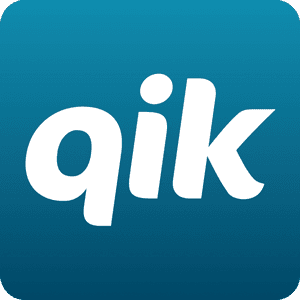
The first time I went “live” on a camera from a mobile phone was with Qik. Qik quickly created a dedicated permanent URL for each user where they can live-stream, and the streams were archived for future viewing. It was very easy just to share that simple memorable URL—something like qik.com/yourname, and everyone can tune into your live streaming.
I went live for the first time from the Culver City area in greater Los Angeles to show my followers the architecture by Eric Owen Moss, from a Nokia E71 phone. Later, the next day, I was out with a bicycle in Santa Monica, I was staying two blocks away from Frank Gahry’s residence, I opened my Qik live streaming for a paparazzi video of Gehry’s odd house in the neighbourhood, followed by the beach and the pier. It was 2010, a decade ago, on a Google Nexus One phone, one of the earliest specimens of Android phones.
Both the E71 and the Nexus One I got for free from Nokia and Google at TED Conference in Long Beach, my entry devices to the smartphone era.
Fring
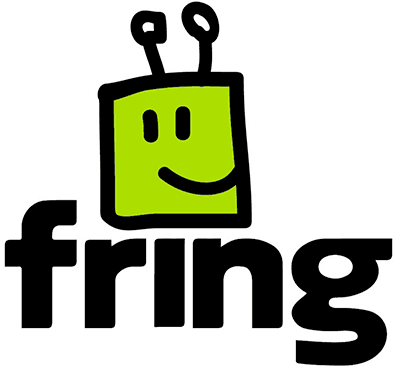
It was the go-to chat application for long. Fring allowed aggregating multiple messengers together, it brought MSN, Yahoo, Skype all in one list with voice and video calling. I used Fring on Nokia phones and later on Android—probably from 2008 to 2012ish. The mobile data was not as fast, yet calls over Fring became popular, and it worked great.
Twitter over SMS
Twitter became popular primarily because of its sms portability. You could tweet by sending sms, and receive sms from people or hash tags you follow as they tweet. You don’t have to have the Internet in your phone to use Twitter! Probably that was an important reason for Twitter to restrict the length of tweets to a single sms size, 160 characters.
I signed up for Twitter in 2009, the sms based Tweeting was still quite alive back then. I remember we used Twitter for disbursing group texts easily, since anyone following a specific hash tag would receive an sms for free, we used this hack to organise a trip in California with a bunch of friends.
The Nokia Ecosystem
Many services tried to build a complete ecosystem of services, starting with Yahoo, MSN, Google—Nokia was not falling behind either. Since Nokia was dominating the semi-smart mobile phone market with the Simbian OS, they developed a wide network of services, like contacts, calendars, maps etc that synced across Nokia devices and also had browser based web interfaces.
My first synced Contact book was on Nokia platform. I loved the way it automatically synchronised all my contacts in new phones, and made it accessible, downloadable, portable over computer browsers, back in 2005–2009ish.
Google used to accept Nokia portability, I synced my Nokia contacts with Gmail when Gmail first came into existence.
Nokia had extensive plans to take over everything under their umbrella. Map was one of their major focuses. I was selected as part of a beta testing program for one of their yet-to-be-released application for mobile phones, it was a Map based blogging app. It could easily record and plug in notes, blog posts, photos, GPS paths on a map as you travel, with a public page that you can opt for sharing easily. It was a fantastic travelogue app concept. They gave me a Nokia C6 phone for free to test the app with. Nokia died before the app could be launched to public.
Using a cellphones as modem over bluetooth
There was no real broadband connection in Dhaka for long. I used my Nokia E71 and later Google Nexus One as modem for using mobile data over Bluetooth tethered to my MacBook or my desktop computer. Grameenphone had a true unlimited EDGE pack for most probably ৳1,200 monthly, that was my go to deal, it was way faster than the available so-called broadband connections in the neighbourhood. The EDGE connection clocked at about 256kbps in 2009.
Technology Is Developing Exponentially—Umm Not really!
The way I see it—it is not; technology is not developing as fast as we often think it is. Much of the Internet is still based on the original protocols set in place in the late eighties and early nineties. Email for example, is still in use the same way with zero improvement in efficiency or security over the last 3–4 decades, other than some band-aid solutions like SPF, DKIM, DMARK etc. Collaborative work is still in infancy, still stuck in browsers. There is no platform-independent application-environment where high performance complex softwares can thrive in the cloud; Java Applet and Flash tried it, and failed. There is no better replacement yet that can take a complex software online. Google Docs, Sheets etcetera are fantastic, yet quite primitive to be honest.
There is no sign of other parts of the computer going to the cloud either, the operating systems are still pretty much in the local disks.
Much of the idea of “cloud computing” is yet to go that far even after two decades of progress, while the phrase is changing its meaning gradually, it now focuses more on servers and CDNs rather than individual collaborations. Still collaborating on a simple video editing project or a graphic design work on a computer is a nightmare, there is no editing tool that works well over the Internet, whereas video editing and other design works are tasks that require frequent feedback and collaboration. Meanwhile, softwares as complex as ArchiCAD BIM had a realtime collaboration service back in 2008! We designed a project where my colleagues were assigned to design and model different zones and floors of the same building’s virtual model over the LAN, everyone worked realtime in 3D and drawings in the same file.
There is almost no tech innovation inside the mighty social media industry, all that there is are minor tweaks here and there in user interfaces and experiences, no major leap in technology per se, the whole thing is still pretty much the same as it was back in early 2000s.
Maps and other location based technology have seen some big improvements. Everything else is falling behind, the progress is disappointing. The Internet and Computer technology did not go to the level we envisioned it would—back in the early two thousands. We need to stop overselling and exaggerating the progress, and admit the fact that we still can’t figure out the encryption for a group video call. And the fact that there is almost nothing that i can do on the Internet that I couldn’t two decades ago—nothing.


